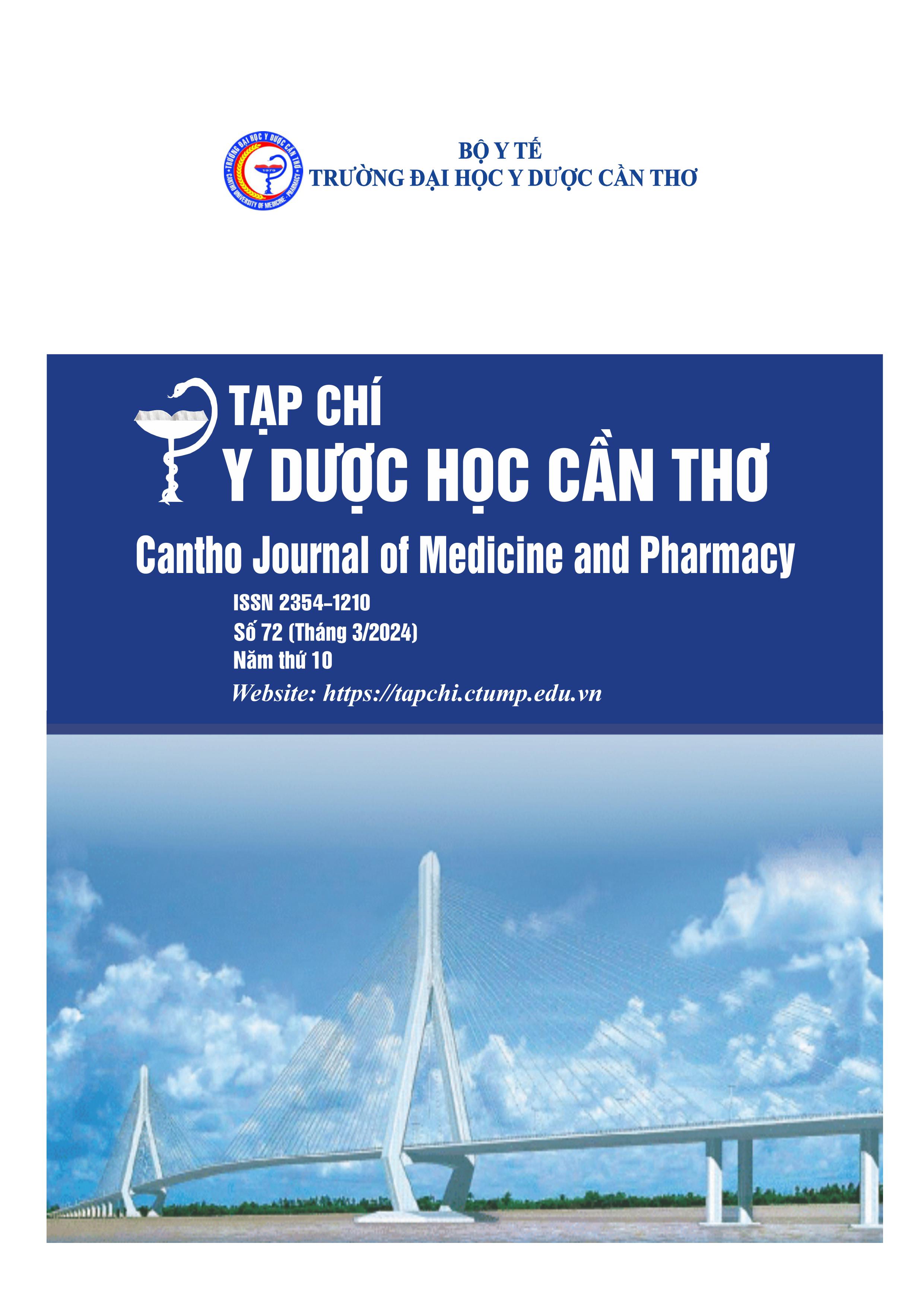STUDY OF EPIDEMIOLOGICAL VARIABLES, CLINICAL AND PARACLINICAL FEATURES OF PATIENTS WITH RIFAMPICINRESISTANT PULMONARY TUBERCULOSIS AT CAN THO TUBERCULOSIS AND LUNG DISEASES HOSPITAL
Main Article Content
Abstract
Background: With tuberculosis rising to become the second major cause of mortality and the 13th leading cause of death overall, multidrug-resistant tuberculosis has become a concerning public health issue due to its rapid spread. to infection-related mortality following COVID-19... Objectives: To characterize the Clinical, paraclinical, analyze of a number of factors related to the Rifampicin resistance rate and epidemiological features of patients with pulmonary tuberculosis at Can Tho Tuberculosis and Lung Disease Hospital who are resistant to Rifampicin. Materials and methods: A cross-sectional survey was conducted among 70 Rifampicin-resistant pulmonary tuberculosis patients treated at Can Tho Tuberculosis and Lung Disease Hospital between May 2022 and June 2023. Results: Males made up 87% of the patient population. The majority age group was 40–60 years old (46%). Alcohol and tobacco addiction rates among patients were 34.3% and 63.4%, respectively. Most of the patients had diabetes (30%), with stomach ulcers (20%). The rate of comorbid diabetes in the new Rifampicin-resistant tuberculosis group was 34.4% and the Rifampicin-resistant re-treated tuberculosis group was 26.8%, the difference was not statistically significant (p=0.491). Most patients (95.7%) report having a cough. Tuberculosis cavernous lesions in monoresistant (5.88%) and multiresistant phenotypes (35.8%) were associated with (OR=8.941; CI=1.098-72.784) and (p=0.028). The number of tuberculosis treatments 1 time was 70.5% in mono-resistant cases and 62.2% in multi-resistant cases. There was no statistically significant association between the number of treatments and the tuberculosis resistance phenotype (OR=1.445; CI=0.466-4.743) and (p=0.533). Conclusion: Propaganda and education regarding the risks, signs, and preventative measures for tuberculosis as well as thorough Rifampicin drug resistance must be the main priorities.
Article Details
Keywords
Tuberculosis, Rifampicin resistant, G xpert, MTB/RIF
References
https://www.who.int/teams/global-tuberculosis-programme/tb-reports/global-tuberculosisreport-2022/tb-disease-burden/2-3-drug-resistant-tb.
2. Tổ chức y tế Thế giới (WHO) số liệu nổi bật về bệnh lao trên toàn thế giới năm 2020.
3. World Health Organization. Global tuberculosis report 2021. 2021. https://www.who.int/publications/digital/global-tuberculosis-report-2021.
4. Nguyễn Thị Ngân. Khảo sát đặc điểm lâm sàng và cận lâm sàng của bệnh nhân lao phổi kháng thuốc điều trị tại bệnh viện lao và bệnh phổi Cần Thơ năm 2015-2016. Trường Đại học Y dược Cần Thơ. 2016. 5-12, 29-41.
5. TB Data Hub. Vietnam Dashboard. https://hub.tbdiah.org/dashboards/countries/vietnam
6. Hoàng Hà, Thị Thu Uyên Lưu, Thị Hoài Ngô. Bệnh lao kháng Rifampicin tại Thái Nguyên, Tạp Chí Y Học Việt Nam tập 500. 2021, 19. 7. Tổ chức y tế Thế giới (WHO) số liệu nổi bật về bệnh lao trên toàn thế giới năm 2018.
8. Phạm Lê Bảo Toàn. Nghiên cứu đặc điểm lâm sàng, cận lâm sàng, tác dụng phụ của thuốc điều trị ở bệnh nhân lao đa kháng thuốc điều trị nội trú tại bệnh viện lao và bệnh phổi Cần Thơ năm 2017-2018. Trường Đại học Y dược Cần Thơ. 2018. 31-42.
9. Parsons L. M., Somosko¨ A. K., Gutierrez C., et al. Laboratory Diagnosis of Tuberculosis in Resource-Poor Countries: Challenges and Opportunities. Clin Microbiol Rev. 2011. 24 (2), 314– 350, doi: 10.1128/CMR.00059-10.


